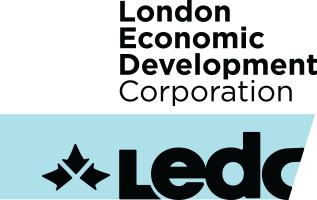Re-Opening Ontario (A Flexible Response to COVID-19) Act, 2020
• Update: On September 25, 2020, Regulation 364/20 introduced specific rules for businesses in operation and added measures for various sectors, aimed at ensuring the safe re-opening of Ontario and also aiding compliance with applicable laws, including the Occupational Health and Safety Act (“OHSA”). Under section 2(1) and (2) of Regulation 364/20, businesses must comply with the advice, recommendations and instructions of Public Health Officials and the Office of the Chief Medical Officer of Health. One such recommendation now includes the daily screening of employees.
• COVID-19 Screening Tool for Workplaces (Businesses and Organizations): Alongside Regulation 364/20, the Ministry of Health has published version 1 of its “Screening Tool for Workplaces”. Upfront the screening tool is labelled as being a ‘recommendation’ pursuant to Regulation 364/20 and states that screening should occur before, or when a worker enters the workplace at the beginning of their shift, or when an essential visitor arrives. Read collectively, the recommendation now requires employers to perform daily screening. Previously and as a matter of good practice, we provided a weekly declaration that employers were able to use and this has been updated to reflect the recent changes. The updated copy of our declaration has been enclosed for your convenience.
• What form should the screening take? Interestingly, neither the recommendation nor the Regulation specify a form or procedure for screening and arguably, screening could therefore be performed verbally and upon entry. Notwithstanding this, it would remain a prudent practice for all employers to continue written or recorded screenings. We say this firstly because the record thereof would serve as proof of compliance with the screening obligation and if challenged, would also serve as evidence of any instances (and reasons) for denying entry to a business.
• What are the required screening questions? On September 25, 2020 the Ministry of Health published the list of required screening questions, a copy of which is also enclosed. These screening questions together with the online self-assessment tool appear to exclude the checking-off of symptoms related to other known causes or conditions e.g. seasonal allergies, provided of course that the individual has not also been diagnosed, travelled or been exposed to anyone who is sick. Therefore, symptoms resulting from known causes or conditions, or which have been diagnosed as being something other than COVID-19, could have an employee still check-off the “no” box and thus potentially enter the workplace.
• Concerns and Realities: regardless of the form of the screening or its daily frequency, the answers provided by employees and/or essential visitors remain input based. Therefore, in the absence of other definitive mechanisms, screening will continue to be based on an honesty system. As such, employers should continue to oversee and manage any symptomatic concerns as they have done in the past. Another consideration or concern is that certain authorities still suggest that individuals may also remain asymptomatic, despite being infected. At this time and regardless of the screening methodologies employed, these individuals will likely continue to move around undetected and without ever feeling the need to seek out a test or tick the symptomatic box. For the time being, the current screening measures are therefore precautionary at best – but remain better than having no screening at all.
By-Laws, Masks and evidence of underlying medical and/or psychological conditions – the in’s and out’s?
• Compulsory wearing of masks or face coverings: Over recent weeks ByLaws have been passed for each region in Ontario, now requiring the wearing of masks in workplaces or enclosed areas to which the public have access, subject of course to certain exceptions. One such exception includes the existence of an underlying medical condition, that may otherwise render an employee unable to wear a mask or face covering. Most By-Laws appear to contain similar language as to the types of exceptions, including the fact that those individuals need not provide proof thereof. But what about the workplace?
• Are employees able to refuse wearing a mask, and simply rely on their say-so of an underlying medical condition? It doesn’t appear to be that simple. To start, these are municipal ByLaws and arguably remain subordinate to Provincial legislation – such as the OHSA and the Human Rights Code (“HRC”). Some, but not all By-Laws confirm this reality, while others have not referenced this hierarchy, given that it applies by operation of law. So how do these By-Laws, the OHSA and the HRC interact in the workplace?
• The Battle of Laws: Under the OHSA, employers are required to take every precaution reasonable in the circumstances to protect the health and safety of their workers. In this way, the By-Laws and the OHSA likely align with the mandatory wearing of masks or face coverings. But what of employees who refuse this rule, relying upon an underlying medical condition which, under the By-Laws, need not be supported with any proof. Simply accepting these refusals may call into question the employers compliance with its obligations under the OHSA and invite unintended liability. This conflict would likely resolve itself by then also triggering the HRC, which given the underlying medical condition/disability, would place an obligation on the employer to accommodate the condition/disability up to the point of undue hardship. To effectively accommodate this, disclosure or proof of the condition may be required. If disclosure is made, the employer would likely follow its own internal accommodation policy. Where an accommodation is not possible without undue hardship, or where the employee refuses to make a disclosure, the likely scenario would be that the employer would then circle back to their obligations under the OHSA, prioritising these by placing the employee on Infectious Disease Emergency Leave (“IDEL”), which is unpaid. Therefore, a deeper analysis may be required in the workplace when employers are confronted with a refusal to comply.
In other news: Possible Extension of the Canada Emergency Wage Subsidy (“CEWS”)
• The Federal Government: during a recent throne speech, made a verbal commitment to extend the CEWS to the summer of 2021. It is hoped that doing so (and if approved) will assist employers who are still experiencing the adverse effects of the pandemic and the delayed reaction that it has had on certain industries. More to follow on this.
For specifics questions, please feel free to reach out to us directly at:
[email protected]
[email protected]
COVID-19 Screening Tool for Workplaces (Businesses and Organizations) and Declaration:


